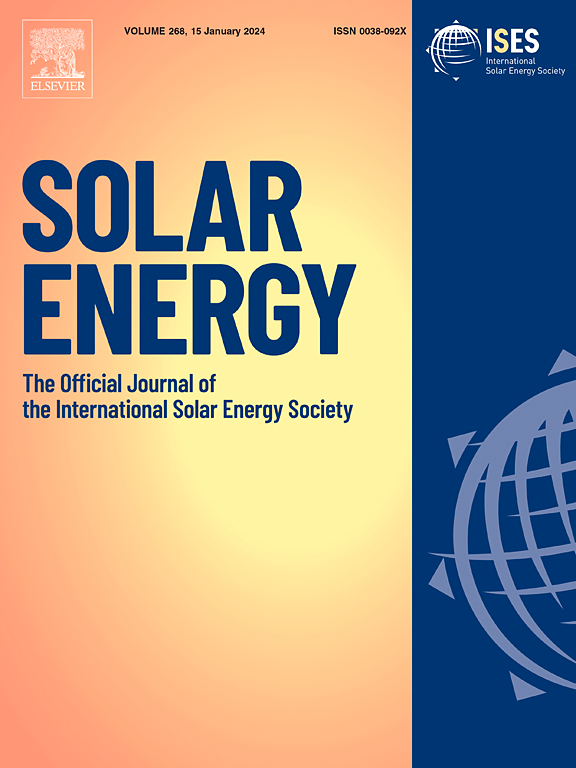Evaluating tracking bifacial solar PV based agrivoltaics system across the UK
IF 6
2区 工程技术
Q2 ENERGY & FUELS
引用次数: 0
Abstract
The increasing competition of land for various purposes has led to the consideration of using it effectively while catering to energy and food security. This study investigates the integration of photovoltaics (PV) systems with farmlands that cultivate potatoes in the UK, analysing energy production and crop yields across eleven regions. Using PVsyst for solar simulations and DSSAT for crop modelling for various PV setups including both monofacial and bifacial systems in both fixed and tracking configurations were examined. This work revealed significant regional disparities in solar irradiance, temperature, and precipitation, impacting both electricity and agricultural output. This study indicates that tracking bifacial 440Wp systems (TB) generated an average of 24.6% more energy than static bifacial (SB) systems with the highest difference of 26.37% in Brighton but at the cost of reduced crop yields. The land equivalent ratio (LER) varies, with SB systems generally achieving higher values with the highest obtained value of 1.39 reflecting their balance between energy and crop production. Financial analysis demonstrates that same area tracking monofacial (SATM) configurations offer the highest internal rate of return (IRR) though there is a huge variation in the outcomes when comparing the lowest and highest there is a difference of 41.16%. The levelized cost of electricity (LCOE) was the lowest, with regions receiving more irradiance (Brighton) indicating the increased economic feasibility for the proposed system. This evaluation emphasizes the potential of agrivoltaics to optimise land use for dual purposes, promoting sustainable energy and food production while highlighting the importance of considering local climatic conditions and system design to utilise the benefits of agrivoltaics.
评估英国各地基于农业光伏系统的跟踪式双面太阳能光伏发电系统
由于各种用途的土地竞争日益激烈,人们开始考虑在满足能源和粮食安全的同时有效利用土地。本研究调查了光伏(PV)系统与英国马铃薯种植农田的整合情况,分析了 11 个地区的能源生产和作物产量。使用 PVsyst 进行太阳能模拟,使用 DSSAT 进行作物建模,对各种光伏设置(包括固定和跟踪配置的单面和双面系统)进行了研究。这项工作揭示了太阳辐照度、温度和降水方面的显著地区差异,对电力和农业产出都产生了影响。研究表明,跟踪式双向 440Wp 系统(TB)比静态双向系统(SB)平均多发电 24.6%,其中布莱顿地区的差异最大,为 26.37%,但代价是作物减产。土地当量比(LER)各不相同,SB 系统的土地当量比通常较高,最高值为 1.39,反映了其在能源和作物产量之间的平衡。财务分析表明,同面积单面跟踪(SATM)配置的内部收益率(IRR)最高,但结果差异很大,最低和最高的内部收益率相差 41.16%。在辐照度(Brighton)较高的地区,平准化电力成本(LCOE)最低,这表明拟议系统的经济可行性更高。该评估强调了农业光伏技术在优化土地利用、促进可持续能源和粮食生产等双重目的方面的潜力,同时强调了考虑当地气候条件和系统设计以利用农业光伏技术优势的重要性。
本文章由计算机程序翻译,如有差异,请以英文原文为准。
求助全文
约1分钟内获得全文
求助全文
来源期刊

Solar Energy
工程技术-能源与燃料
CiteScore
13.90
自引率
9.00%
发文量
0
审稿时长
47 days
期刊介绍:
Solar Energy welcomes manuscripts presenting information not previously published in journals on any aspect of solar energy research, development, application, measurement or policy. The term "solar energy" in this context includes the indirect uses such as wind energy and biomass
 求助内容:
求助内容: 应助结果提醒方式:
应助结果提醒方式:


